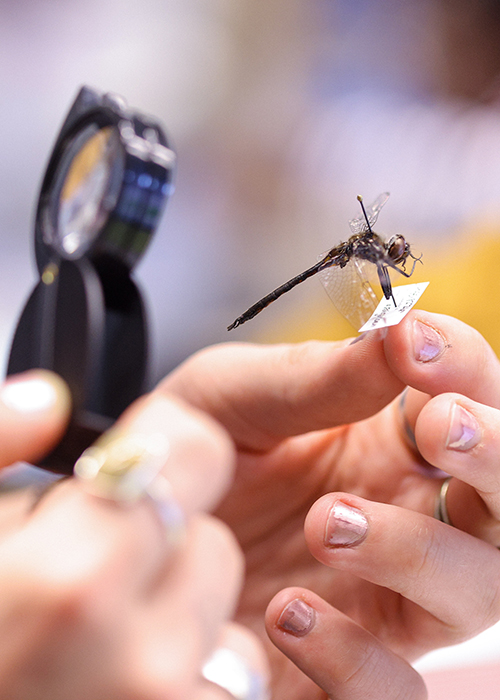MayX Snapshot: Meet the beetles – and the dragonflies, and the grasshoppers
This week, we’re highlighting courses from May Experience – a chance for students to explore topics beyond the typical academic year.
COURSE: Insect Diversity
INSTRUCTOR: Wade Worthen, Rose J. Forgione Professor of Biology
DESCRIPTION: Field-based survey of the major groups of insects. Lecture will focus on the evolutionary history, ecology and taxonomy of insects. The primary component will be collection, identification and preservation of insect specimens on campus and at the Furman Forest.
While many in South Carolina have spent this spring trying to keep insects as far away from themselves as possible, Wade Worthen’s MayX students have done the opposite. Half of their final grade depends on it.
Worthen, the Rose J. Forgione Professor of Biology, hopes his Insect Diversity students come away with an appreciation of the ecological and economic impact of insects, along with their variety and ubiquity.
“Insects constitute about half the species that we’ve identified on our planet,” he said. “So, to study diversity, you really need to study insects. They are ecologically important in myriad ways, and economically important as pests of agricultural crops and pollinators of a lot of our foodstuffs.”

A student examines a specimen during a MayX Insect Diversity course.
The students are getting to see that diversity up close by creating their own collections of samples of the variety of local insect species.
“We have about an hour of lecture each day, and then we head outside and collect bugs,” Worthen said.
“I had a blast during our lab outings,” said Austyn Feigenbaum ’24. “Me, Dr. Worthen and my classmates swinging around bug nets while clinging to our kill jars and tubes like aspiring entomologists.”
The class often hunts on campus in the woods behind Daniel Chapel as well as in the Furman Forest in the Blue Wall Preserve in northeast Greenville County. Much of the collecting was done with a net, but some specimens had to be coaxed out with tools like a Berlese funnel (or Tullgren funnel), which uses light to force organisms from a soil sample down into a collection bottle. Students could also use pitfall traps or ultraviolet light to add to their collections.
Once they’ve caught them – either pinning them into a physical collection or clicking them into a photographic record – the students identified each individual insect to “different levels of taxonomic resolution,” said Worthen.
Each collection had to contain at least 100 insects, all identified on the order level – “as broad as the difference between a fly and a beetle and a grasshopper and a dragonfly,” he explained. Then, 50 had to be identified on the family level, “which would distinguish a fruit fly from a house fly from a crane fly from a horse fly,” said Worthen. Finally, 20 of the specimens had to be identified down to the species level: European honeybees (Apis mellifera), for example, or blue dasher dragonfly (Pachydiplax longipennis). Each collection had to represent 12 different orders and 50 different families.
“As the class ended, I was familiar with their importance as detritivores and pollinators while also being able to identify, classify and display these different insect orders and families,” Feigenbaum said. “Everything discussed about insects in the course was new to me, which was encouraging and stimulating, as my brain was fried from spring semester class loads.”